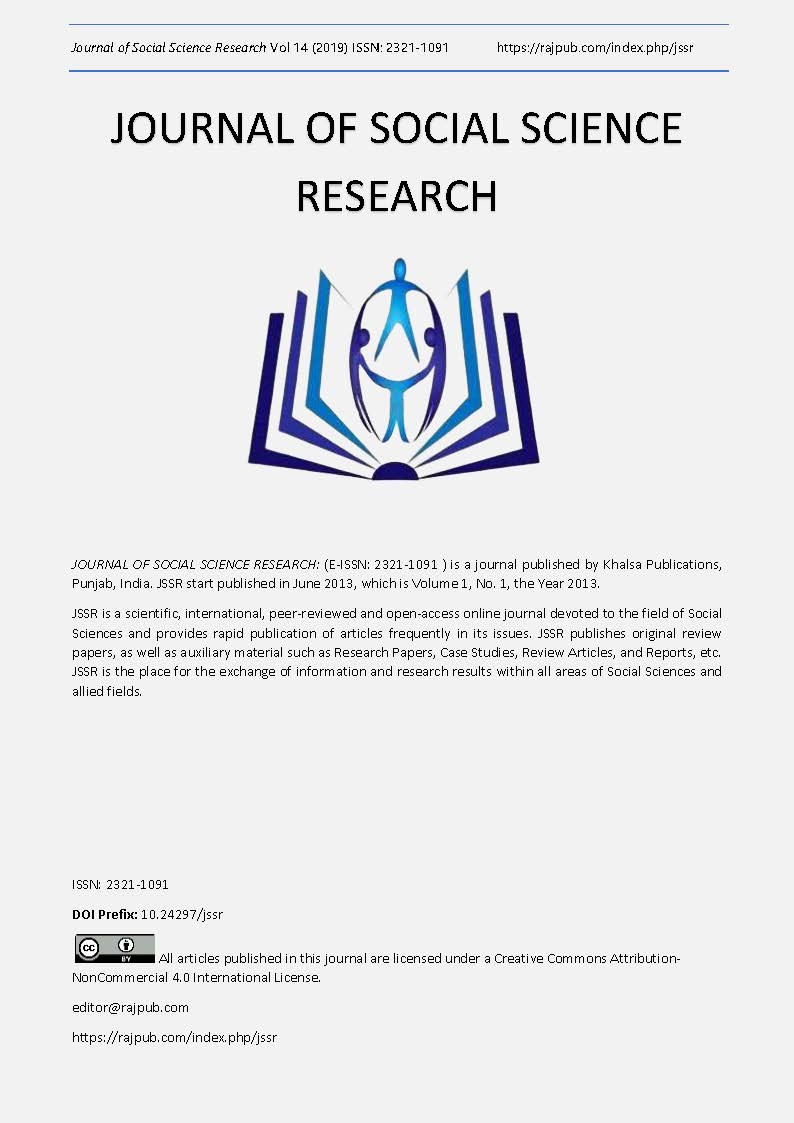SILENCE AS COMMUNICATION: A PHENOMENOLOGICAL STUDY OF CERVICAL CANCER PATIENTS AND CAREGIVERS IN KENYA
DOI:
https://doi.org/10.24297/jssr.v14i0.8134Keywords:
Communication, cervical cancer patients, caregiver, silenceAbstract
Managing a serious diagnosis is a complex and challenging process thus effective communication is a critical aspect of cancer management. However, this has not been given the much needed emphasis. This study therefore sought to examine the influence of communication on cancer management. It adopted an interpretivist research paradigm which is a qualitative approach. It employed the phenomenological method to obtain data from cervical patients and their caregivers. Specifically, a range of in-depth interviews and observations were used to collect data from eight patients and eight caregivers purposively sampled within Uasin Gishu County. Data from the interviews were then analyzed thematically and presented in narrative form using paraphrases and quotations. Ethical issues such as informed consent, confidentiality and official authorization were observed at all levels. The findings of the study indicated that the patients and caregiver downplayed their feelings so as to protect themselves and their loved ones. Social cultural factors and stigma also contributed to their silence. It is concluded that silence is draining and patients and caregivers need to be encouraged by medical practitioners, family and the support groups to share their feelings. Based on the findings of this study, it is necessary for the patients and caregivers to have a platform where they will be able to share their experience.
Downloads
References
Anderson, J. O., & Martin, P. G. (2003). Narratives and healing: Exploring one family's stories of cancer survivorship. Health Communication, 15(2), 133-143.
Bradleya, J. T., Baronea, M., Mahe´b, C., Lewisc, R., & Lucianid, S. (2005). Delivering cervical cancer prevention services in low-resource settings International Federation of Gynecology and Obstetrics: Elsevier Ireland Ltd.
Chase, S. E. (2005). Narrative inquiry: Multiple lenses, approaches, voices. In Denzin, N. K. & Lincoln, Y. (eds.) The Sage Handbook of Qualitative Research. 3rd ed, pp 651-679. Location: Publisher.
Daher, M. (2012). Cultural beliefs and values in cancer patients. Annals of Oncology, 66-69. doi: 10.1093/annonc/mds091.
Ferlay, J., Shin, H.R., Bray, F., Forman, D., Mathers, C.D., Parkin, D., & GLOBO-CAN (2008). CancerIncidence and Mortality Worldwide: IARC Cancer-Base No.10 [Internet]. Lyon, France: International Agency for Research on Cancer. 2010; Available from: http://globocan.iarc.fr.2.
Globocan, H. (2008). “Globocan 2008 database: summary tables by cancer”. Available at
http://www.globocan.iarc.fr/. [Accessed on 2015 April 17].
Hycner, R. H. (1985). Some guidelines for the phenomenological analysis of interview data. Human Studies, 8, 279-303.
Hydén, L. (1997). Illness and narrative. Sociology of Health and Illness, 19(1), 48-69.
Pantilat SZ. (2009) Communicating with seriously ill patients: better words to say. JAMA. 301(12):1279-81.
Parrott, R. (2004). Emphasizing “Communication” in Health Communication. Journal of Communication, 54: 751–787. doi: 10.1111/j.1460-2466.2004.tb02653.
Patton, M. Q. (2002). Qualitative research & evaluation methods (3rd ed.). Thousand Oaks: Sage Publications.
Thorne, S., Hislop, G. T., Kuo, M., & Armstrong, E.-A. (2006). Hope and probability: Patient perspectives of the meaning of numerical information in cancer communication. Qualitative Health Research, 16, 318-336.
Van Manen, M. (2014). Phenomenology of Practice: Meaning-Giving Methods in Phenomenological Research and Writing. California: Left Coast Press.
World Health Organization (2008). World Cancer Report 2008. Lyon: Inter-national Agency for Research on Cancer.
Downloads
Published
How to Cite
Issue
Section
License
 All articles published in Journal of Advances in Linguistics are licensed under a Creative Commons Attribution 4.0 International License.
All articles published in Journal of Advances in Linguistics are licensed under a Creative Commons Attribution 4.0 International License.




